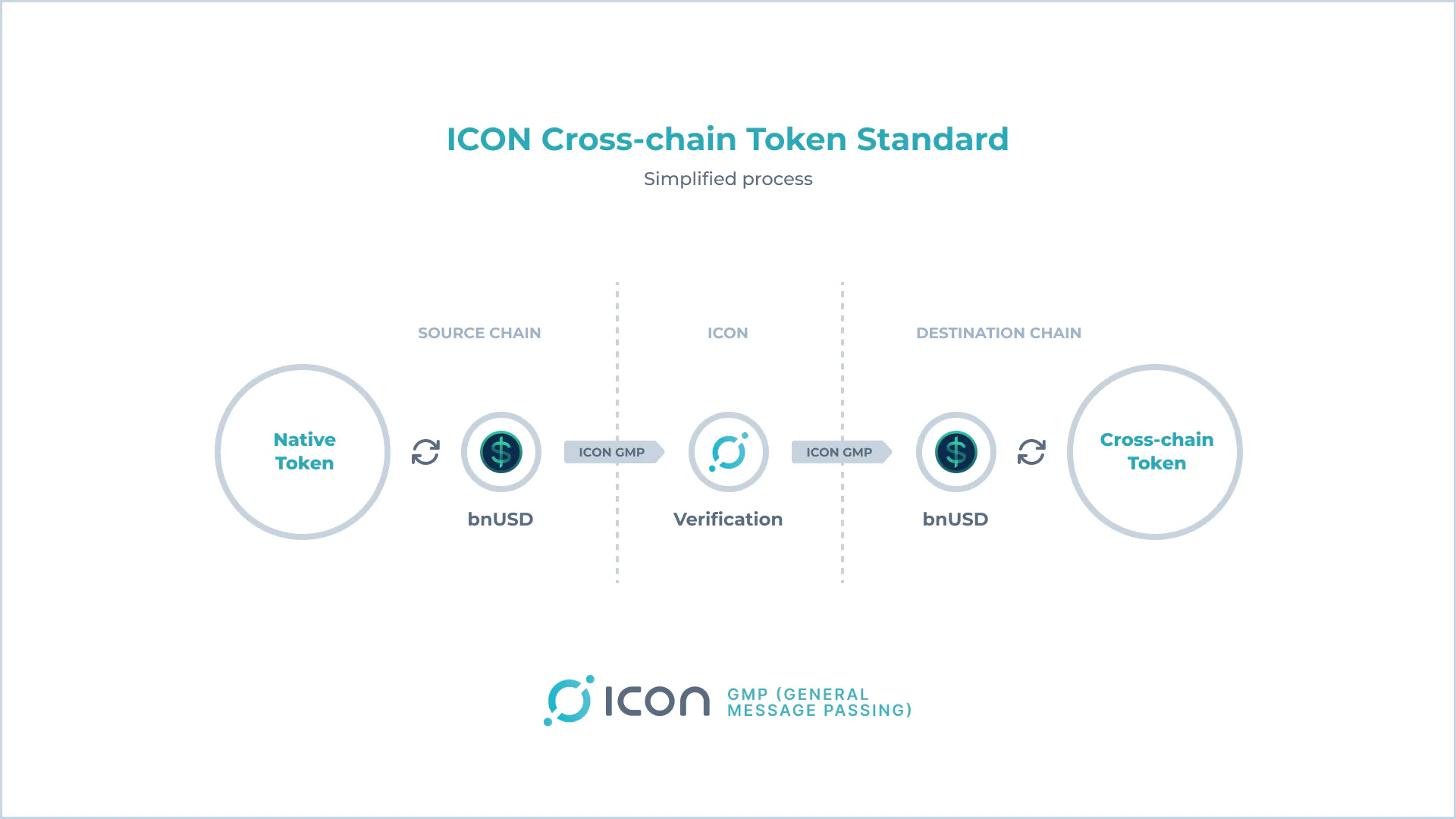Introducing ICON’s Cross-chain Token Standard
Gone are the days when ICON's cross-chain strategy relied on wrapped token swaps. While wrapped assets were essential for their time—enabling assets to move to new blockchains and laying the groundwork for cross-chain transfers—they had their limitations. Wrapped assets played a crucial role in expanding DeFi into a multichain framework and will likely always have a place. However, the wrapped asset model has inherent drawbacks. The primary limitation is that these assets are non-fungible across different interoperability protocols since each protocol deploys wrapped assets on behalf of a project. This results in completely different, non-fungible assets for each route taken, leading to liquidity fragmentation, an undesirable user experience, and less efficient markets.
ICON’s new direction focuses on offering users native transfers. Similar to how we deployed bnUSD, we aim to provide this functionality to all projects' liquidity on Balanced. If a project chooses Balanced for its liquidity, we can offer its token on any of the Balanced-connected chains, delivering a native experience.
It's important to note that this cross-chain standard will adhere to ICON’s token standard framework and to ERC20 standards for tokens on the EVM chain.
Why is this significant?
This standard, integrated through ICON’s cross-chain DEX, Balanced, allows any project to launch its token on any blockchain connected to Balanced. This means the project only needs to deploy liquidity into a single pool rather than multiple pools across different chains. This approach maximizes the efficiency of liquidity usage and gives the project greater control over its tokens. They gain the ability to own, upgrade, and customize their tokens across various blockchains, streamlining operations and enhancing scalability.

This standard builds upon the foundational framework of Balanced's bnUSD. Venture23 will lead its development and implementation, with funding approved through ICON’s Contribution Proposal System (CPS). Initially, the focus will be on the ICON, EVM, and SUI Move platforms, with all development and implementation targeted for completion within approximately two months. Stay tuned for further updates.
Disclaimer: The content of this article solely reflects the author's opinion and does not represent the platform in any capacity. This article is not intended to serve as a reference for making investment decisions.
You may also like
XRP Whale Activity Surges With Billions in Binance Deposits Per Day

$IMX Soars 24% in 4-Hour Rally – Can Immutable Lead the Next Web3 Gaming Boom?

VIPBitget VIP Weekly Research Insights
The Sui ecosystem has performed exceptionally well over the past six months, driven by a positive flywheel effect built on DeFi incentives, ecosystem partnerships, and support for high-quality projects. This cycle — subsidizing staking participation, boosting TVL and liquidity, empowering new projects with exposure and expanding its user base — has propelled Sui to the forefront. Currently, the market is speculating on a potential SUI ETF launch and anticipating another TVL milestone for the ecosystem. Recently launched Sui-based tokens, such as DEEP and WAL, have already been listed on Korea's leading exchange Upbit, demonstrating the strong backing and resources of the Sui Foundation. Additionally, an upcoming token unlock worth over $250 million has drawn further market attention. While large unlocks can trigger price concerns, as seen with Solana, SOL remains resilient, and many investors are optimistic about SUI's long-term price action. A post-unlock pullback could present an attractive entry point.

Ethereum (ETH) Price Prediction May 2025: Will ETH Break $2,100 or Face Rejection?
